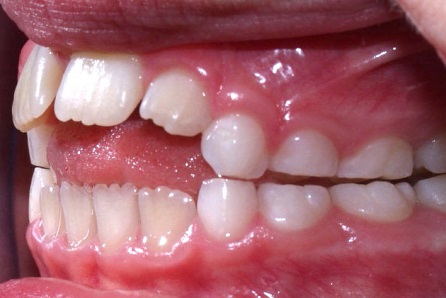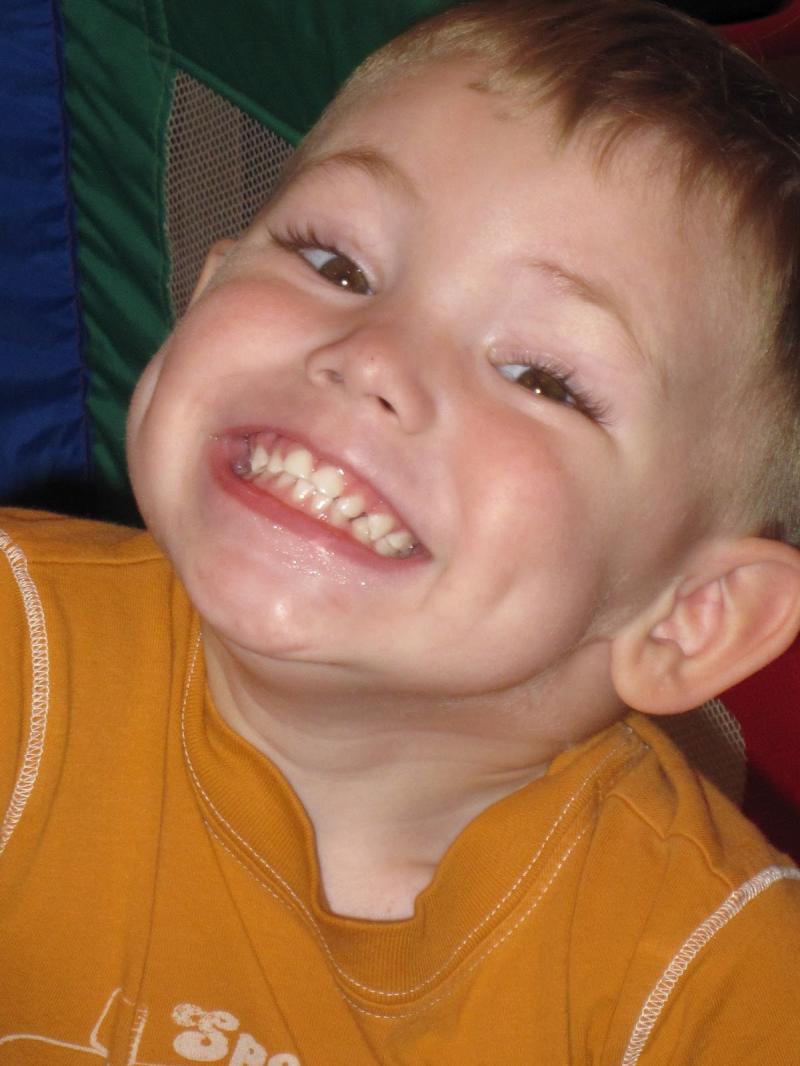Dr Blair Fadem
735 East Ohio ave., 202
Escondido, CA 92025
ph: 760-294-7450
drfadem
EARLY ORTHODONTIC TREATMENT
GOOD DENTAL HEALTH BEGINS EARLY
The American Dental Association recommends that a child first visit the family dentist between the ages 6 to 12 months, while the child's baby teeth are erupting. It is an excellent time to lay the foundation for a lifetime of good dental habits. The first dental appointment should focus good oral hygiene, and nutritional counseling, hopefully creating a positive relationship to the dentist office as a foundation of good health practices.
EARLY ORTHODONTIC SCREENING EXAM
As soon as a orthodontic problem is noted, either a tooth eruption problem or jaw bone growth problem, it is probably a good idea to get an orthodontic consult. This could be as young as 2 years old when the primary teeth have come in. The exam has always been free and the siblings as well.
EARLY WARNING SIGNS MAY INDICATE NEED FOR EXAM
Biting into the roof of the mouth, or the cheek
Crowding, overlapping or blocked out teeth
Difficulty in chewing or biting
Early or late loss of teeth
Facial imbalance
Finger sucking or other oral habits
Grinding or clenching of the teeth while sleeping
Jaws that do not match each other or that protrude or retrude.
Mouth breathing exclusively during sleep
Pronunciation problems
Protruding or "buck" teeth
The American Association of Orthodontists (AAO) recommends that all children receive an orthodontic screening by age 7. "Permanent teeth generally begin to come in at age 6 or 7. It is at this point that orthodontic problems become apparent.
At this age the first molars are in contact with each other, and the orthodontist can evaluate the posterior bite, and because the incisors are coming in we can evaluate the overjet and overbite in the front of the mouth. For the great majority of kids no early treatment is needed, to the benefit of the parent's peace of mind, just to know everything is going to be fine.
Because bones are still growing, there are treatment modalities, that are possible at age 6 or 7, that are impossible at age 11 or 12, so it's an ideal time to evaluate a child. Then we can determine what orthodontic treatment, if any, may be needed either now or in the future.
BENEFITS OF EARLY TREATMENT
Correct harmful habits
Harmonize the width of the dental arches
Helps improve some speech problems
Improve esthetics and self-esteem
Influence jaw growth in a positive manner
Lower risk of trauma to protruded incisors
Preserves existing space or increases space by space regaining
Reduce likelihood of impacted permanent teeth
Simplify and shorten treatment time for later corrective orthodontics
Making Braces Cool
To make braces more acceptable and fun for young people, manufacturers have made brightly colored elastics. These are the tiny rubber bands that hold the wires to the braces. Children can choose elastics with their school colors or a holiday color scheme, such as orange and black for Halloween.
Choosing the color of the elastics allows patients to feel that they are more involved in their treatment.
Still Require Adaptation
Braces today tend to be less uncomfortable and less visible than they used to be. But they still take some getting used to. Food can get caught around brackets and in wires, and brushing and flossing can take more time. After adjustments sometimes the teeth may be a little sore. Tooth discomfort can be controlled by taking a pain reliever, such as ibuprofen (Advil, Tylenol and others) or aspirin if necessary. The use of lighter and more flexible wires has greatly lessened the amount of soreness or discomfort during treatment.
Orthodontic treatment in young children is known as interceptive orthodontics. Intervention may begin as early as age 6 or 7. At this age, teeth are still developing. The jaw is still growing. That means certain conditions, such as crowding, may be easier to address.
Before permanent teeth have come in, it may be possible to help teeth to erupt (emerge through the gums) into better positions. It's common, for example, for the dental arch to be too small to fit all of the teeth. A few decades ago, the solution for crowding was almost always to extract some of the permanent teeth to make space. Then fixed braces were used to position the teeth properly.
Early intervention takes advantage of the fact that a child's jaw is still growing. For example, a device called a palatal expander may be used to expand the child's upper dental arch. Once the arch is the proper size, there's a better chance that the adult teeth will emerge in better position. Sometimes teeth still may be crowded after all of them have erupted. In such cases, some permanent teeth may still have to be extracted to make room to align the teeth properly.
So-called early treatment also may be useful when the dental arches and jaws are not in the correct position. Functional appliances may fix or improve these problems. More treatment usually is needed later on, but it may be shorter and less involved.
It is important to note that children who receive interceptive orthodontics generally still need braces or other orthodontic appliances later. However, this early treatment may shorten and simplify future treatment in selected cases. This is commonly known as two-phase treatment.
It is important to note that early treatment does not apply to all orthodontic problems. The reason is at this point, we do not know anything about : the remaining teeth that have yet to come in, or what the future growth characteristics will be. However, it may help in certain cases.
BENEFITS OF INTERCEPTIVE ORTHODONTICS
Avoiding injury or loss of protruding front teeth
Coordination the extraction of baby teeth with family dentist
Correcting alignment of teeth
Correcting crossbite, night time grinding of teeth, tooth interference, and functional shift
Eliminating harmful habits: thumb, tongue thrust, or lip habit
Enhancing speech development
Evaluation of breathing and breathing habits that adversely affect growth
Improving self-image
Healthy smile

Unilateral crossbite-uneven growth results

Habit correction, some habits have effects:


Copyright 2018 Fadem Orthodontics. All rights reserved.
735 East Ohio ave., 202
Escondido, CA 92025
ph: 760-294-7450
drfadem
